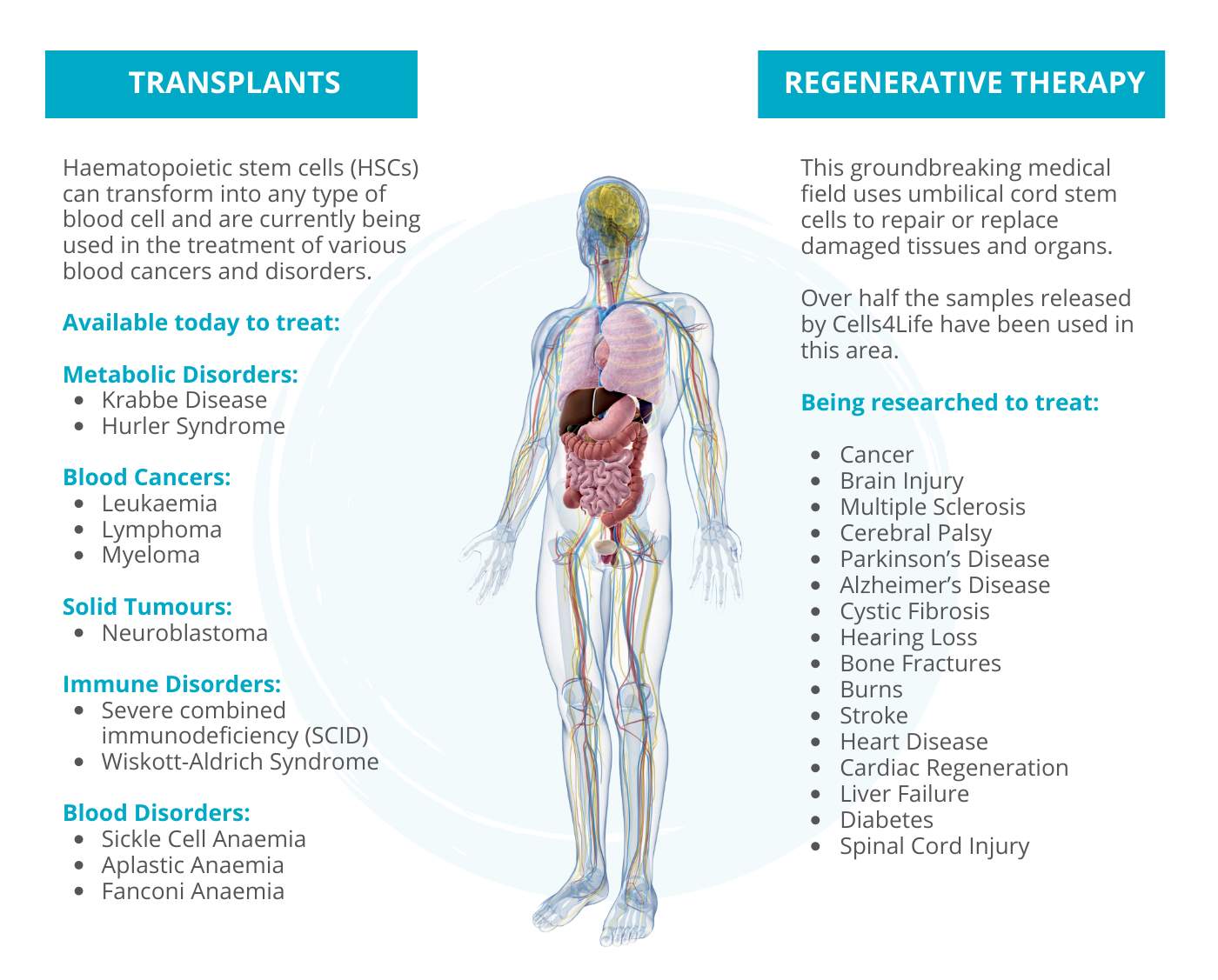
There is a vast amount of information available online about cord blood banking at birth, commonly known as cord blood banking – so much that it can be confusing for expecting parents who have only heard about the concept for the first-time.
Although saving the umbilical cord blood is a growing trend worldwide, there are still many parents who didn’t know about it, so they were not able to save their baby’s umbilical cord blood on the day of delivery. To spread more awareness about the important benefits of cord blood we are publishing a series of articles dedicated for expecting parents who want to learn more about it.
In this first part of Cord Blood banking 101 series, we are going to provide you with a list of useful articles that discuss about the history of cord blood, why save the cord blood, what diseases can be treated and more.
85+ Medical Conditions Treated with Cord Blood Stem Cells
Umbilical cord blood is already being used to treat more than 85 illnesses and over 40,000 cord blood transplants had already taken place worldwide. Here’s how cord blood stem cells are currently being used in the medical field:

It was in 1988 (more than 30 years ago), when the first cord blood transplant was performed on a 5-year-old boy with Fanconi Anaemia. The young boy was successfully treated with his newborn sister’s umbilical cord blood. And in 1995, Dr Mary Laughlin of Duke Medical Center has performed the first adult cord blood treatment for leukaemia.
More articles to learn more about how cord blood is being used to treat many conditions:
1. The History of Umbilical Cord Blood – shows a timeline of when cord blood was first discovered to be useful in medicine and how it’s been used over the past years.
2. How Can Storing Cord Blood Affect Your Baby’s Future – highlights two real-world examples where the stem cells found in umbilical cord blood have been useful:
-
- The story of Joseph Davis Jr. who was diagnosed with sickle cell anaemia. Although his parents did not save his umbilical cord blood, when they had a second child they seized the opportunity and used Joseph’s sibling’s stem cells to cure him of the disease.
- The story of Luke Fryar who was diagnosed with cerebral palsy at a young age. Thanks to stem cell treatments, his motor skills and speech have greatly improved.
3. Why Newborn Umbilical Cord Blood is so Valuable – a good starting point for parents who want a general guide to cord blood banking. The 4 main reasons why newborn cord blood is so important are:
-
- Cord blood is an extremely rich source of stem cells.
- Cord blood stem cells are very useful for rebuilding a person’s immune system after being treated for leukaemia.
- The stem cells found in umbilical cord blood are less mature than stem cells in bone marrow. These immature stem cells are easier to transplant because they carry less risk of rejection.
- Cord blood will soon be the dominant source for all treatments and many adults are receiving stem cell transplants.
4. What is Cord Blood & Why is it Important – provides a number of interesting cord blood facts in a handy infographic layout. It includes the 4 main reasons why parents save their child’s umbilical cord blood:
-
- To prepare their baby for a healthy future.
- Because their family has a history of a specific disease that stem cells can treat now or into the future.
- Because of possible difficulty finding a stem cell match in public banks.
- Because a doctor recommended they save their child’s stem cells.
There are Many Types of Stem Cells in Cord Blood
There are many types of stem cells and growth hormones found within umbilical cord blood but the main types of stem cells in cord blood are:
- Hematopoietic Stem Cells (HSCs) which form blood and immune cells. These are the type of stem cells that are used in the 80+ medical treatments available today.
- Mesenchymal Stem Cells (MSCs) which are multipotent stem cells. Multipotent means they are capable of turning into a number of other types of cells including myocytes (muscle cells), osteoblasts (bone cells), chondrocytes (cartilage cells) and adipocytes (fat cells). MSCs have been found to have anti-inflammatory capabilities and can secrete substances that are useful for treating some diseases. These stem cells are the subject of much research in the field of regenerative medicine.
- Very small embryonic-like (VSEL) stem cells, which include some pluripotent stem cells. Pluripotent stem cells are capable of turning into any kind of cell, so may be extremely valuable in the development of new medical treatments. This article – Umbilical Cord Blood, a Rich Source of VSELs describes the amazing potential of these types of stem cells.
- Read more about the 3 main types of stem cells found in the umbilical cord blood »
“There is amazing potential in the stem cells found in umbilical cord blood.”
Researchers are using stem cells to develop new and exciting medical treatments for conditions we once thought were incurable. This useful article – Umbilical Cord Blood: Future of Stem Cell Research highlights some of the conditions which umbilical cord blood may be used to treat in the future, including:
- Heart Disease
- Stroke
- Spinal Cord Injuries
- Diabetes
- Multiple Sclerosis
- Blindness and Macular Degeneration
- Hearing Loss
- Paraplegia
- Breast Cancer, Lung Cancer and more!
There are Amazing Success Stories
The stem cells found in umbilical cord blood save people’s lives on a regular basis and their use is becoming more common. This article – 5 Amazing Cord Blood Transplant Success Stories, shares incredible stories of the children whose lives were saved because of a stem cell transplant. The success stories featured include:
- Erik Haines who was suffering from Globoid Cell Leukodystrophy. He was successfully treated with stem cells and is alive and well today. Erik was the 6th person in the world to be treated with the stem cells of an unrelated person. Erik’s brother had the same affliction and sadly died at the age of 2.
- Gabby Carter who was suffering from sickle cell anaemia. This dangerous blood disorder deprived Gabby’s body of oxygen, caused intense pain and increased her chances of having a stroke. Gabby is now cured thanks to stem cells.
- Katelyn Bailey was diagnosed with Acute Myeloid Leukaemia (AML) at only 6 years of age. After eventually finding a stem cell match from a public cord bank, Katelyn was treated and cured of leukaemia.
Watch out for the part 2 of our Cord Blood Banking 101 series!
Reference: https://www.ncbi.nlm.nih.gov/pmc/articles/PMC5580430/
{{cta(‘7d7cc8da-ed20-48a8-8ef3-e2429767260f’)}}


